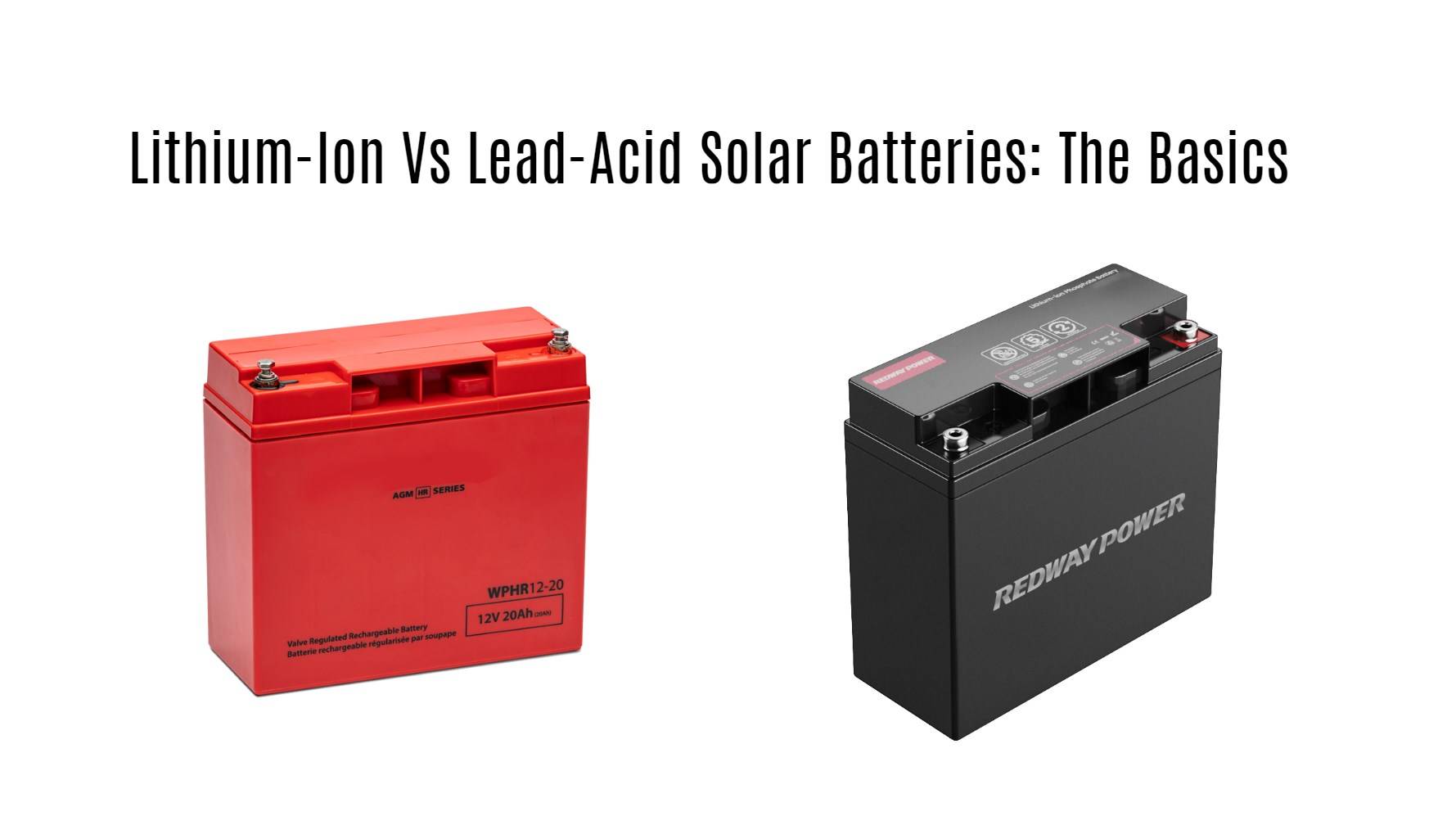As the demand for renewable energy sources rises, solar power has become increasingly popular. A crucial component of a solar power system is the energy storage solution, which ensures that the energy generated can be used when needed. Among the various battery options available, lead-acid and lithium-ion batteries are the most common. In this guide, we delve deeply into the specifics of these two types of batteries, providing you with all the information you need to make an informed decision.
How Lead-Acid and Lithium-Ion Batteries Work
Understanding the fundamental workings of both lead-acid and lithium-ion batteries is essential to grasp their differences.
Lead-Acid Batteries
Lead-acid batteries operate through a chemical reaction between lead and sulfuric acid. This reaction results in the formation of lead sulfate and releases electrical energy. The main components of these batteries are:
- Positive Plates: Lead dioxide
- Negative Plates: Sponge lead
- Electrolyte: Diluted sulfuric acid
Lithium-Ion Batteries
Lithium-ion batteries use lithium ions as the charge carriers. During discharge, lithium ions move from the anode to the cathode through an electrolyte. The basic components include:
- Anode: Typically made of graphite
- Cathode: Made of lithium metal oxide
- Electrolyte: Lithium salt in a solvent
These fundamental differences influence their performance characteristics significantly.
Battery Lifespan and Cycle Life
Lead-Acid Batteries
Lead-acid batteries typically offer around 500 to 1000 charge cycles. Their lifespan is often shorter due to issues such as sulfation and water loss in the electrolyte.
Lithium-Ion Batteries
Lithium-ion batteries, in contrast, can provide between 2000 and 5000 charge cycles, depending on the specific type and usage conditions. This longevity results from their stable chemistry and efficient charge/discharge cycles.
Cost Analysis: Initial Investment vs. Long-Term Value
Lead-Acid Batteries
Lead-acid batteries are generally more affordable initially due to their simpler design and less expensive materials. This makes them a cost-effective option for small-scale or short-term projects.
Lithium-Ion Batteries
Though more expensive upfront, lithium-ion batteries often prove to be more economical in the long run. Their higher efficiency, longer lifespan, and reduced maintenance costs contribute to significant savings over time.
Storage Capacity and Energy Density
Lead-Acid Batteries
Lead-acid batteries have a lower energy density, meaning they store less energy per unit of weight or volume. This can be a limitation for systems requiring substantial energy storage in a confined space.
Lithium-Ion Batteries
Lithium-ion batteries boast a higher energy density, allowing them to store more energy in the same physical space as lead-acid batteries. This makes them ideal for applications where space and weight are critical considerations.
Depth of Discharge (DoD)
Lead-Acid Batteries
Lead-acid batteries typically have a DoD of around 50%. Exceeding this can significantly reduce their lifespan and efficiency.
Lithium-Ion Batteries
Lithium-ion batteries offer a superior DoD, often up to 80-90%, allowing users to utilize more of the battery’s capacity without compromising its lifespan.
Efficiency and Performance
Lead-Acid Batteries
The efficiency of lead-acid batteries usually ranges between 70-85%, meaning some energy is lost during each charge/discharge cycle.
Lithium-Ion Batteries
Lithium-ion batteries are highly efficient, often achieving efficiencies of 90-95%. This translates to better performance and more effective energy usage in solar power systems.
Environmental Impact and Safety
Lead-Acid Batteries
Lead-acid batteries contain toxic materials such as lead and sulfuric acid, which require careful handling and disposal. However, they are highly recyclable, and many components can be reused.
Lithium-Ion Batteries
While lithium-ion batteries have a lower environmental footprint during operation, they pose challenges in recycling due to the complexity of their materials. They are, however, safer with a lower risk of leakage and less environmental contamination.
Conclusion: Making the Right Choice
Choosing between lead-acid and lithium-ion batteries depends on your specific needs and circumstances. Lead-acid batteries might be suitable for those seeking a low-cost solution for smaller, less demanding projects. In contrast, lithium-ion batteries, with their longer lifespan, higher efficiency, and superior performance, offer a robust solution for those looking for long-term, reliable energy storage despite the higher initial investment.




